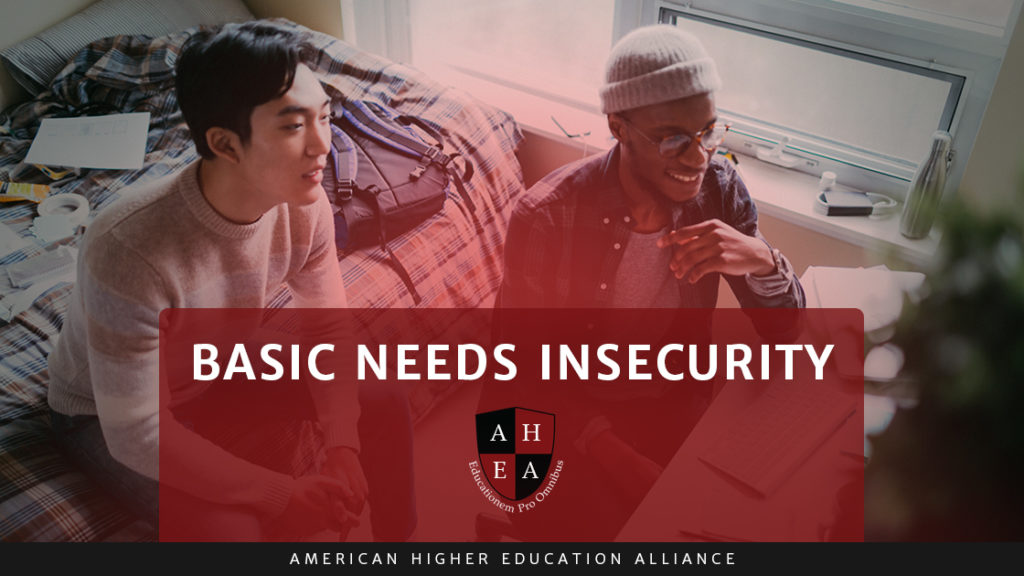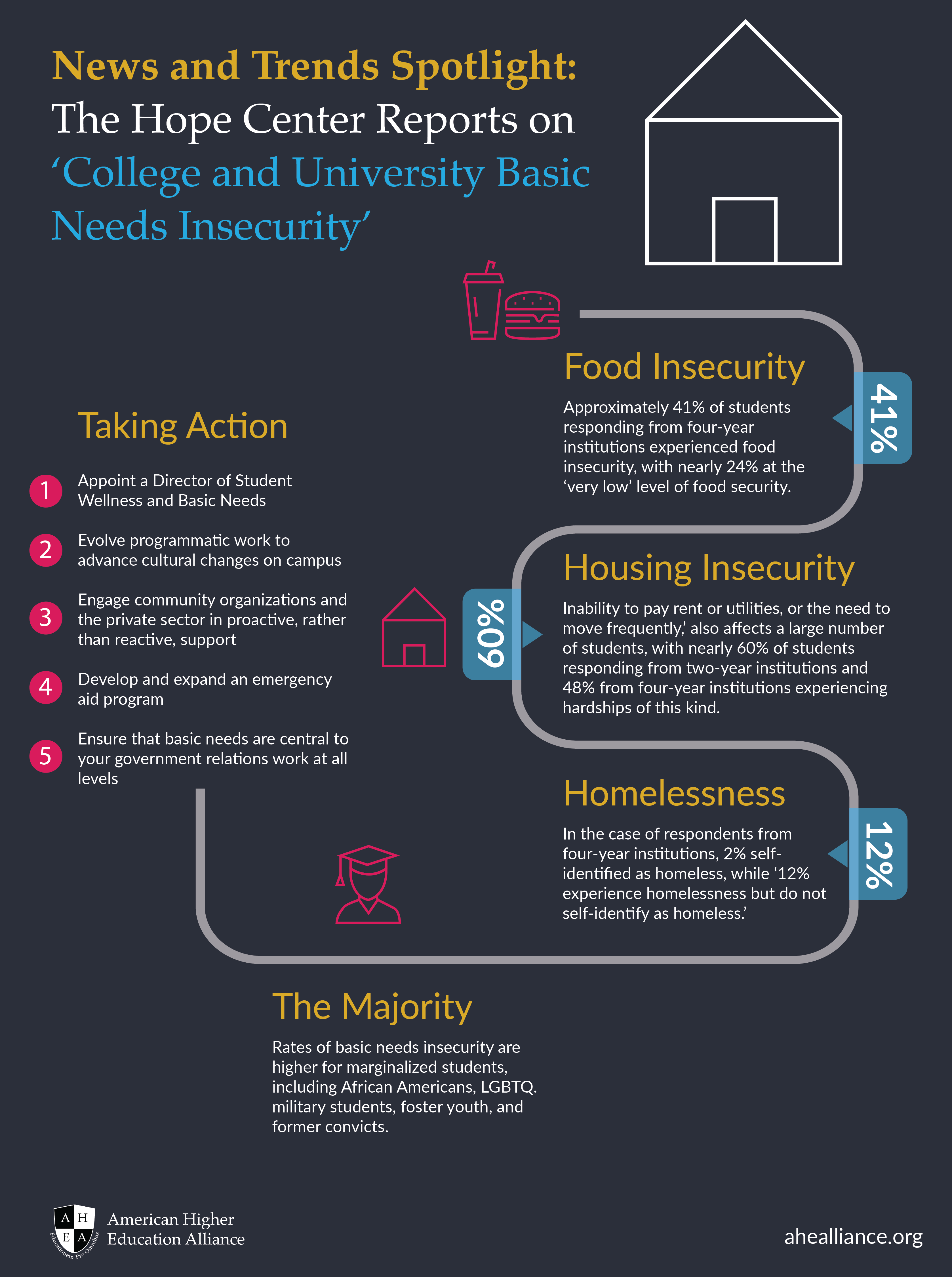
The Hope Center Reports on ‘College and University Basic Needs Insecurity’

In April of 2019, the Hope Center for College, Community, and Justice, published its most recent assessment of ‘basic needs security’ (or, ‘access to affordable food and housing’) among American college students. The report is based on a fall 2018 survey of students at 123 two- and four-year institutions, with approximately 86,000 students responding.
In the case of food insecurity, which the researchers define as ‘the limited or uncertain availability of nutritionally adequate and safe food, or the ability to acquire such food in a socially acceptable manner,’ it was found that during the 30 days prior to the survey, approximately 48% of students responding from two-year institutions had experienced challenges of this kind. Furthermore, nearly 28% of students fell into the ‘very low’ level of food security. (Note: these results were based on the 18-item Household Food Security Survey Module from the U.S. Department of Agriculture). Approximately 41% of students responding from four-year institutions experienced food insecurity, with nearly 24% at the ‘very low’ level of food security.
Housing insecurity, which the researchers define as ‘a broad set of challenges such as the inability to pay rent or utilities, or the need to move frequently,’ also affects a large number of students, with nearly 60% of students responding from two-year institutions and 48% from four-year institutions experiencing hardships of this kind. The researchers further note that housing insecurity most commonly takes the form of challenges arising from ‘a rent or mortgage increase that made it difficult to pay (30% of students at two-year institutions and 25% at four-year institutions)’. The report also indicates that 8% of students responding from two-year institutions and 6% at four-year institutions ‘left their household because they felt unsafe’.
Finally, the researchers report separately on homelessness, defined as a situation in which ‘a person does not have a stable place to live.’ They report here that if ‘five percent of respondents at two-year institutions self-identify as homeless,’ some 13% could be said to experience homelessness based on their survey responses (e.g., if ‘they identified living conditions that are considered signs of homelessness’). In the case of respondents from four-year institutions, 2% self-identified as homeless, while ‘12% experience homelessness but do not self-identify as homeless.’ They add that ‘the vast majority of students who experience homelessness temporarily stayed with a relative or friend, or couch surfed.’
Further analysis of these results with respect to the ‘demographic, academic, economic characteristics, and life circumstances’ of the respondents led the researchers to conclude that:
‘Rates of basic needs insecurity are higher for students attending two-year colleges compared to those attending four-year colleges. Rates of basic needs insecurity are higher for marginalized students, including African Americans, students identifying as LGBTQ, and students who are independent from their parents or guardians for financial aid purposes. Students who have served in the military, former foster youth, and students who were formerly convicted of a crime are all at greater risk of basic needs insecurity. Working during college is not associated with a lower risk of basic needs insecurity, and neither is receiving the federal Pell Grant; the latter is in fact associated with higher rates of basic needs insecurity.’
Given the severity and scope of the problems highlighted by their research, the authors call upon higher education leaders to implement the following five ‘action steps’: ‘(1) Appoint a Director of Student Wellness and Basic Needs (2) Evolve programmatic work to advance cultural changes on campus (3) Engage community organizations and the private sector in proactive, rather than reactive, support (4) Develop and expand an emergency aid program (5) Ensure that basic needs are central to your government relations work at all levels.’
Additional information about the Hope Center and the Basic Needs study can be found at: https://hope4college.com/
